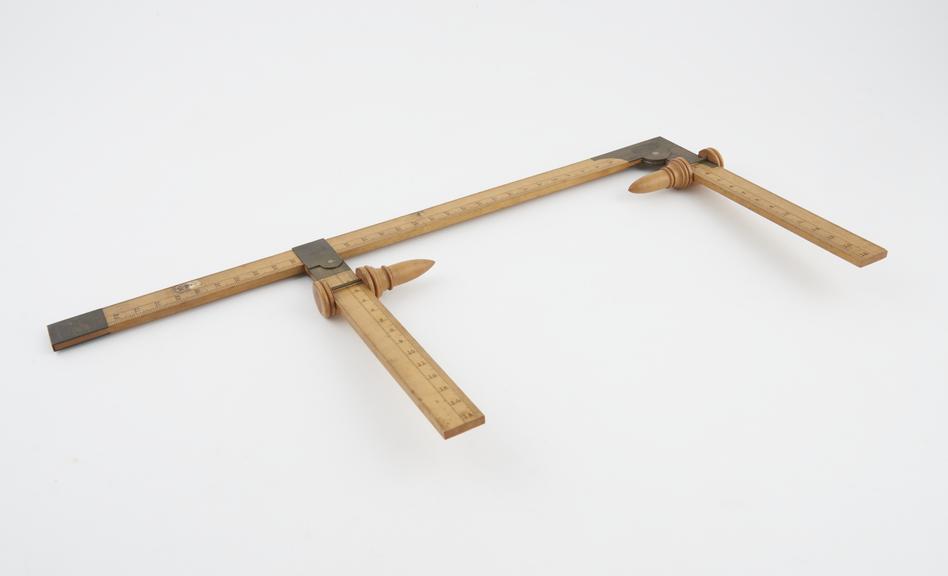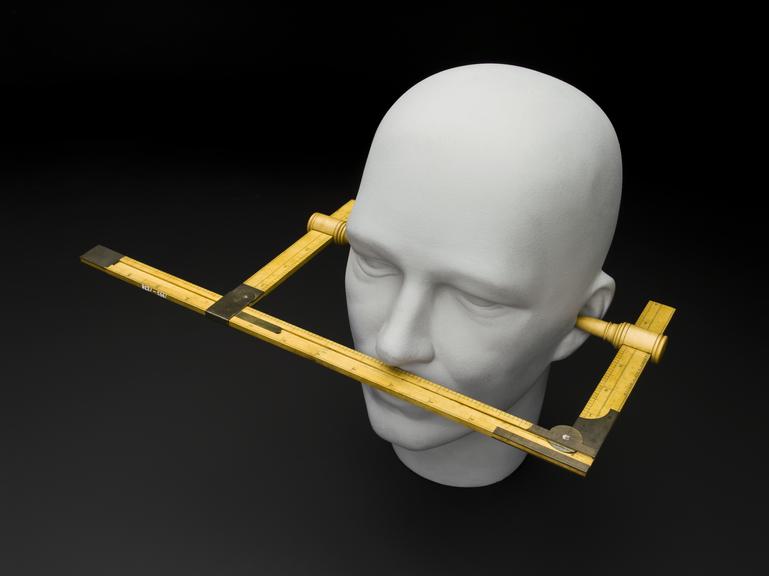

Callipers used in craniology, Greenwich, England, 1850-1900
- maker:
- Hudson & Son






Calipers used in craniology, boxwood (for women), by Hudson and Son, Greenwich, 1850-1900
These boxwood callipers were used as craniometers. They measured women’s heads during craniological studies. Craniology studied the bones of the skull, grouping people according to categories such as intelligence, race and criminal temperament. It was often the basis for anthropological theories during the 1800s. These explained social behavior and human evolution. The callipers were made by Hudson and Son, of Greenwich in London.
Details
- Category:
- Psychology, Psychiatry & Anthropometry
- Object Number:
- 1993-1238
- Materials:
- wood and brass (copper, zinc alloy)
- Measurements:
-
overall: 19 mm x 370 mm x 20 mm,
- type:
- craniometer
- credit:
- National Maritime Museum




